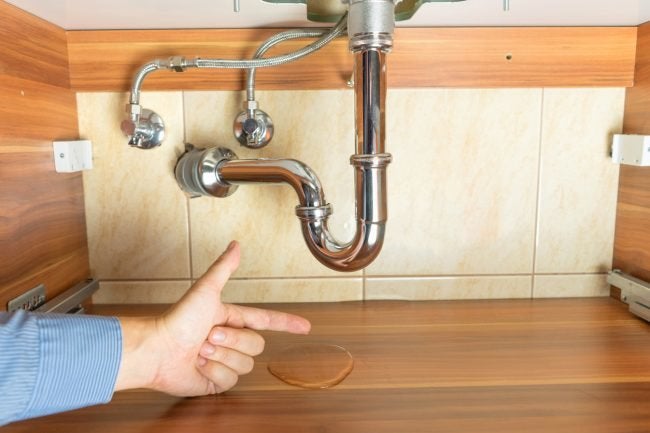6 Methods to Detect Hidden Water Line Leaks Efficiently
6 Methods to Detect Hidden Water Line Leaks Efficiently
Blog Article
The writer is making several great pointers related to Top leak detection hacks as a whole in the article underneath.

Early discovery of leaking water lines can alleviate a possible calamity. Besides saving you money, it will certainly lessen the aggravation and aggravation. The minute you find a leak, calling your plumber for repair work is the most effective service. However, some little water leaks may not show up. Here are some hacks that assist if you can not discover it with your nude eyes.
1. Take A Look At the Water Meter
Every home has a water meter. Inspecting it is a surefire way that assists you uncover leaks. For beginners, turn off all the water resources. Make certain nobody will certainly purge, use the faucet, shower, run the cleaning machine or dishwashing machine. From there, go to the meter as well as watch if it will transform. Since no person is using it, there must be no movements. If it relocates, that suggests a fast-moving leak. Similarly, if you discover no changes, wait an hour or more and also inspect back once again. This indicates you may have a slow leak that can also be below ground.
2. Examine Water Intake
If you find abrupt adjustments, regardless of your usage being the very same, it suggests that you have leaks in your plumbing system. A sudden spike in your costs indicates a fast-moving leak.
At the same time, a steady boost every month, despite the exact same routines, shows you have a slow-moving leak that's also gradually rising. Call a plumber to extensively inspect your residential property, particularly if you feel a warm area on your floor with piping underneath.
3. Do a Food Coloring Test
When it comes to water intake, 30% comes from commodes. If the color in some way infiltrates your dish throughout that time without flushing, there's a leakage in between the container and dish.
4. Asses Outside Lines
Don't fail to remember to inspect your outdoor water lines too. Should water seep out of the link, you have a loosened rubber gasket. One little leakage can waste heaps of water and also increase your water costs.
5. Examine and Evaluate the Circumstance
Property owners need to make it a routine to check under the sink counters as well as also inside cupboards for any type of bad odor or mold and mildew development. These 2 warnings indicate a leak so timely attention is required. Doing routine evaluations, also bi-annually, can save you from a significant trouble.
Inspect for discolorations and also compromising as most pipelines and also home appliances have a life expectancy. If you suspect leaking water lines in your plumbing system, don't wait for it to rise.
Early discovery of dripping water lines can minimize a potential calamity. Some little water leakages may not be visible. Checking it is a proven method that helps you discover leaks. One tiny leakage can throw away heaps of water as well as spike your water bill.
If you presume dripping water lines in your plumbing system, do not wait for it to rise.
WARNING SIGNS OF WATER LEAKAGE BEHIND THE WALL
PERSISTENT MUSTY ODORS
As water slowly drips from a leaky pipe inside the wall, flooring and sheetrock stay damp and develop an odor similar to wet cardboard. It generates a musty smell that can help you find hidden leaks.
MOLD IN UNUSUAL AREAS
Mold usually grows in wet areas like kitchens, baths and laundry rooms. If you spot the stuff on walls or baseboards in other rooms of the house, it’s a good indicator of undetected water leaks.
STAINS THAT GROW
When mold thrives around a leaky pipe, it sometimes takes hold on the inside surface of the affected wall. A growing stain on otherwise clean sheetrock is often your sign of a hidden plumbing problem.
PEELING OR BUBBLING WALLPAPER / PAINT
This clue is easy to miss in rooms that don’t get much use. When you see wallpaper separating along seams or paint bubbling or flaking off the wall, blame sheetrock that stays wet because of an undetected leak.
BUCKLED CEILINGS AND STAINED FLOORS
If ceilings or floors in bathrooms, kitchens or laundry areas develop structural problems, don’t rule out constant damp inside the walls. Wet sheetrock can affect adjacent framing, flooring and ceilings.
https://www.servicemasterbyzaba.com/blog/how-to-detect-water-leakage-in-walls/

We are very interested in Hacks to detect leaks and I hope you liked the new piece. Sharing is caring. Helping others is fun. Thanks so much for your time spent reading it.
Burst? Reach us! Report this page